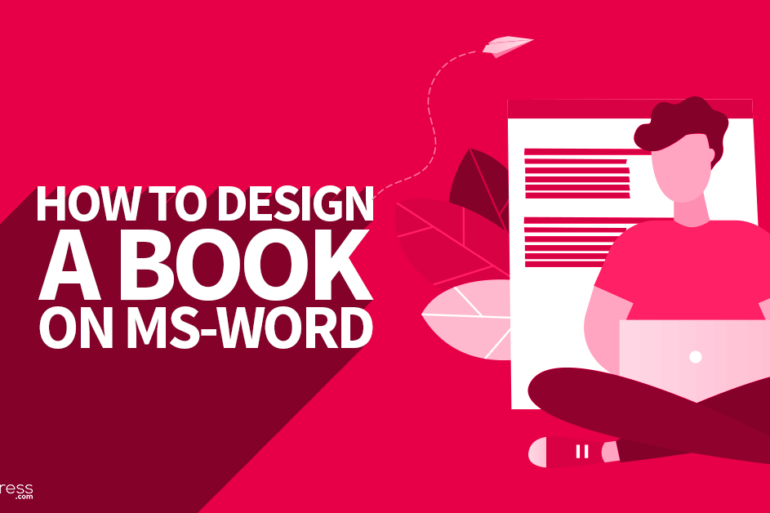Create your book interior using Microsoft Word
For book lovers, the interior design of a book is as important as the cover. A captivating story isn’t going to help read a book comfortably for hours on end without straining your eyes. The fonts, the spacing, the layout and the book size should be proportionate and suitable. Now, you don’t need a fancy software and years of training to achieve this. You just need Microsoft Word.
We’ve created Microsoft Word templates with the right margins, spacing, fonts and layout in several book sizes. These templates are available for download in this link. You can download a template in the book size you’ve chosen, copy-paste the content of your book into the template, save it as a PDF and voila, you’ve created a print-ready PDF of the interior of your book! Also, we’ve designed these templates according to specifications followed by most international publishing houses and some of these specifications are detailed below.
- Parts of a book
Front matter, body text, end matter – it’s important to understand that the interior of a book is broadly classified into these three parts. The first page (called the title page), the copyrights page, dedication, contents, foreword, preface, acknowledgments, etc., form the front matter of a book. In the templates, we’ve made allowances for you to add any of these front matter sections and others, if you wish to do so. If you do not wish to have some of these front matter sections in the book, all you have to do is delete them.
The body text consists of part pages, chapters and text subdivisions. In the templates you can assign up to four different heading levels within chapters. These can be accessed from the Styles gallery (discussed in the next section) in each template.
The end matter consists of sections like the epilogue, glossary, appendix, references, index, etc. Academic books usually have extensive end matter sections that provide additional information on the text given in the book.
- Styles gallery
Each passage or heading with special formatting can be assigned as a style to the Styles gallery. This style can then be reused for subsequent sections. We’ve pre-loaded all templates with various styles for headings, passages, quotes, etc. This feature is especially useful to maintain uniformity in books that have multiple heading levels and body text formatting.
The first heading in a chapter is assigned the style ‘Heading 1’, the next level heading ‘Heading 2’ and so on. To apply a heading style to a phrase all you need to do is select the phrase and choose the heading style from the styles gallery.
The text within a chapter can also be given styles. The first paragraph after a heading or subheading is usually given a flush left alignment, whereas subsequent paragraphs are given slight indents. We’ve created a style called ‘normal_without indent’ for first paragraphs and ‘normal_indent’ for subsequent paragraphs. Assign the style ‘normal_without indent’ for first paragraphs and ‘normal_indent’ for all other paragraphs.
- Headers and pages numbers
Setting headers and page numbers in a book is quite tricky. Page numbers in the front matter are usually Roman numerals. Page numbers restart from one in the body text and are usually Arabic numerals. But there’s also one more thing to note here; the first page of a new section will not contain a page number or a header.
In the front matter and end matter, headers on both the left and right side pages of the book usually consist of only the name of that particular section. For example, the headers on both the left and right side pages of the Foreword would be ‘Foreword’. This is different in the body text. The left side page headers are usually the title of the book and the right side page headers are either the author name or the name of the chapter. Since the templates have been pre-set according to these rules, all you would have to do is replace the text in the headers of one right side page and one left side page in the body text and the rest will automatically flow.
- Section breaks
To start a new chapter or section in a new page, it’s always best to add section breaks. These can be found in the Page Layout tab in Microsoft Word. To start a new page on an even page, that is a left side page, add and even page break. To start a new page on an odd page, that is a right side page, add an odd page break. These have already been added in the templates; be sure to add odd page breaks when you add new chapters.
Once you’ve added all the chapters, update the contents page by right-clicking inside the field and selecting ‘Update field’. Then, all you need to do is save the file as a PDF. We’ve shown a detailed demo of how you can set up the book using the templates in the video. We’ve also provided a reference guide along with all the templates.
Besides using the Word templates, you also have the option of using the writing tool available on the Author Dashboard to create the interior design of the book. More details on this can be found here.

